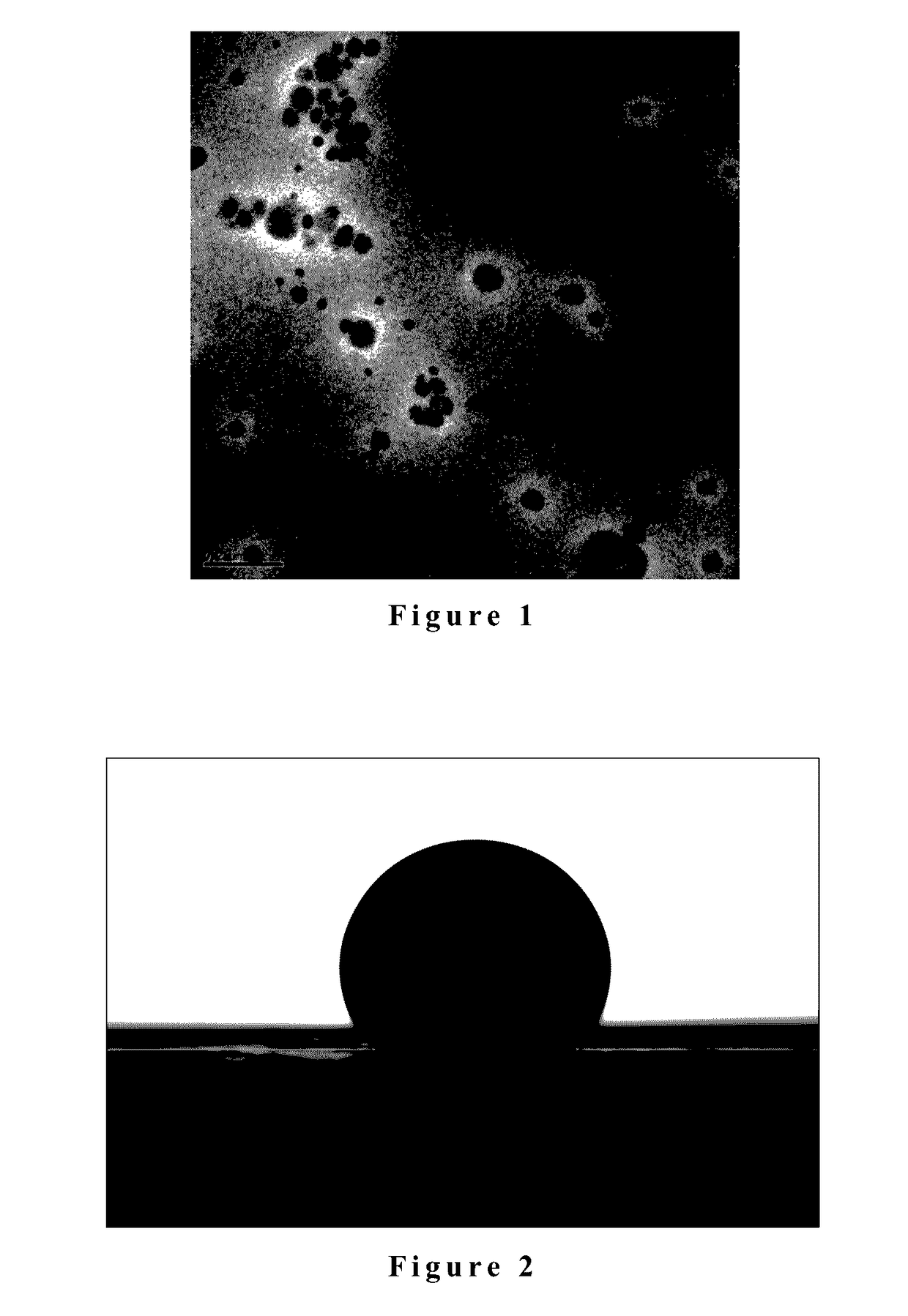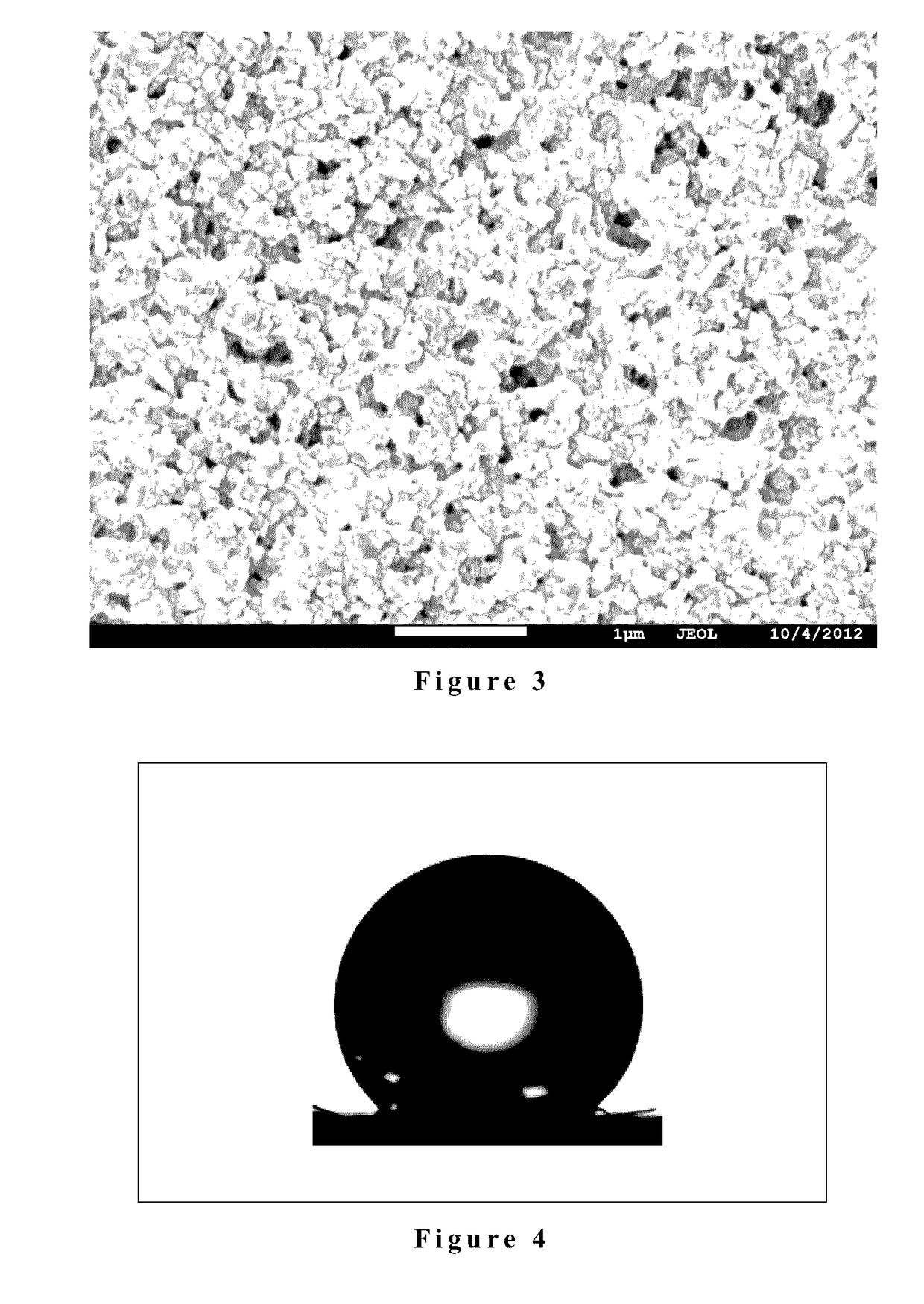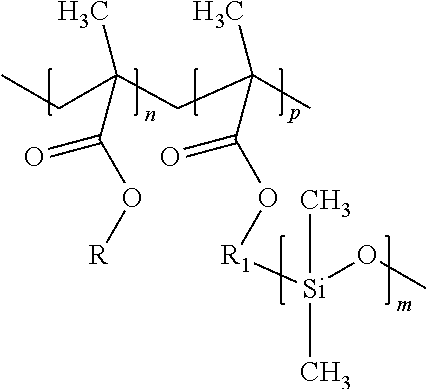Method for Obtaining a Hybrid Latex and Use Thereof in Hydrophobic and Superhydrophobic Coatings
a technology of hybrid latex and superhydrophobic coating, applied in the chemical industry, can solve the problems of increasing the price of final coatings
- Summary
- Abstract
- Description
- Claims
- Application Information
AI Technical Summary
Benefits of technology
Problems solved by technology
Method used
Image
Examples
example 1
[0050]Eight different silicone-acrylic hybrid latexes were obtained by synthesis according with first embodiment of this invention, having polydimethylsiloxane / polybuthylmethacrylate weight ratios of 1:4, 2:3, 1:1 and 3:2 and two polydimethylsiloxane molecular weight macromonomers, 5,000 grams / mol (A, B, C and D) and 10,000 grams / mol (E, F, G and H). Each hybrid silicone latex was dispersed in water to 5 weight percent. Afterwards, each composition was applied by drop casting on glass substrate and dried at 40° C. over 8 hours. Water contact angles of resulting coatings are shown in table 1, and FIG. 2 shows a water drop on top of one of the coatings. Also, as a reference, water contact angle was measured for a pure polybuthylmethacrylate coating (latex 1).
TABLE 1advancing and receding water contact angles forcoatings formed by the polydimethylsiloxane / polybutylmethacrylate silicone hybrid latex.Latex A RLatex A RA100.0 ± 2.370.2 ± 1.0E107.1 ± 2.382.2 ± 1.8B101.3 ± 3.180.6 ± 0.4F106...
example 2
[0051]The hybrid silicone latex G of example 1 was mixed with a standard acrylic emulsion at several weight ratios. The coatings formed from these compositions preserve the hydrophobicity and easy-to-clean properties of that of the pure hybrid silicone latex G of example 1 with only the 25 weight percent of the pure hybrid silicone latex G from the total solids of the composition. Table 2 reports the resulting water contact angles from these coatings.
TABLE 2Advancing and receding water contact angles ofcoatings from blends with different weight ratios of hybridsilicone latex G and a 100% acrylic emulsion.ratio A R10 / 90102.4 ± 3.264.6 ± 5.225 / 75105.7 ± 1.580.0 ± 3.050 / 50106.1 ± 1.989.1 ± 2.0
example 3
[0052]A composition containing nanoparticles with 10.2% vinyltrimethoxysilane surface modification dispersed in water, and the hybrid silicone latex G of example 1 was prepared. Concentrations are 5% of nanoparticles and 5% of latex G by weight based on the total weight of the composition. This composition also includes 20 weight percent of ethyl acetate as co-solvent from the total of the composition. Composition was homogenized using ultrasound shaker. It was applied on a substrate with low absorption and left drying for 24 hours at room temperature. Coatings obtained in this way presents a water contact angle of 142° and a sliding angle of 15°. Micro- and nano-roughness can be appreciated in FIG. 3. FIG. 4 shows a water drop on top of this coating.
PUM
| Property | Measurement | Unit |
|---|---|---|
| sizes | aaaaa | aaaaa |
| sizes | aaaaa | aaaaa |
| sizes | aaaaa | aaaaa |
Abstract
Description
Claims
Application Information
 Login to View More
Login to View More - R&D
- Intellectual Property
- Life Sciences
- Materials
- Tech Scout
- Unparalleled Data Quality
- Higher Quality Content
- 60% Fewer Hallucinations
Browse by: Latest US Patents, China's latest patents, Technical Efficacy Thesaurus, Application Domain, Technology Topic, Popular Technical Reports.
© 2025 PatSnap. All rights reserved.Legal|Privacy policy|Modern Slavery Act Transparency Statement|Sitemap|About US| Contact US: help@patsnap.com



